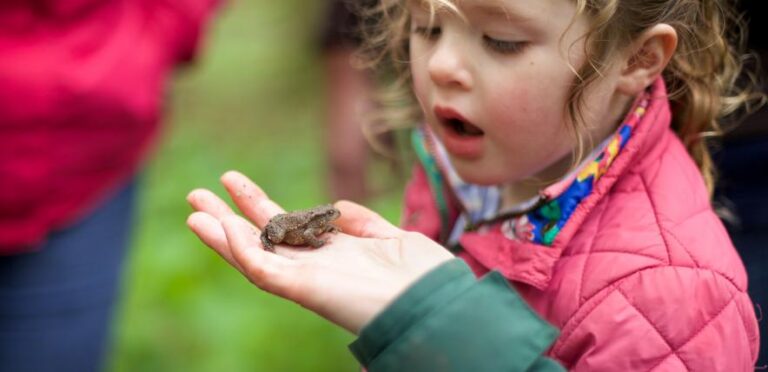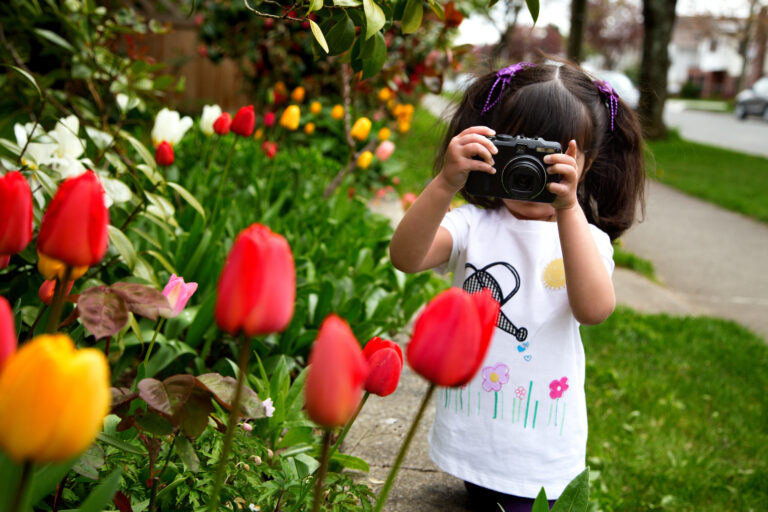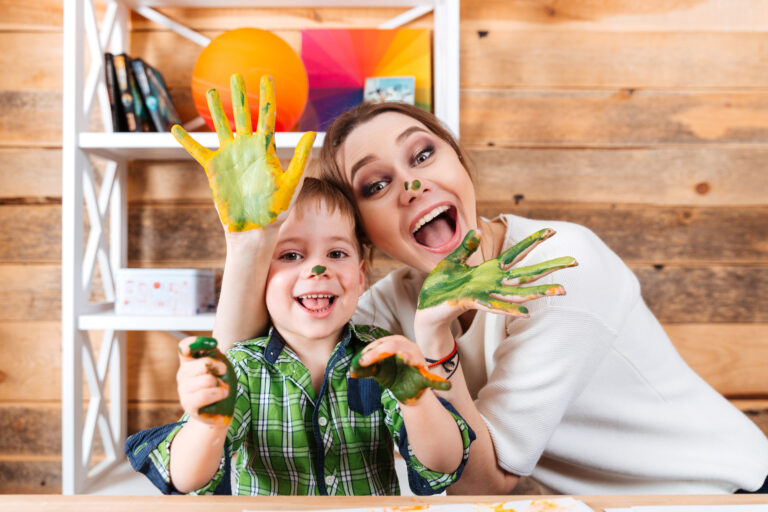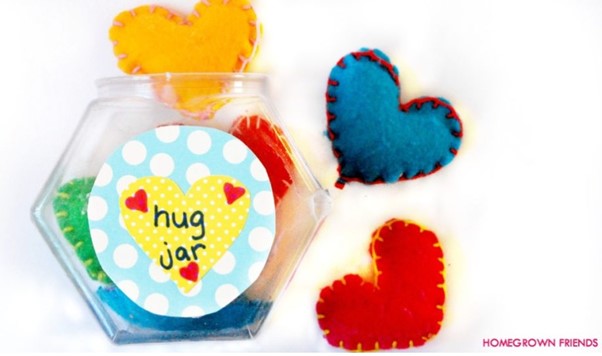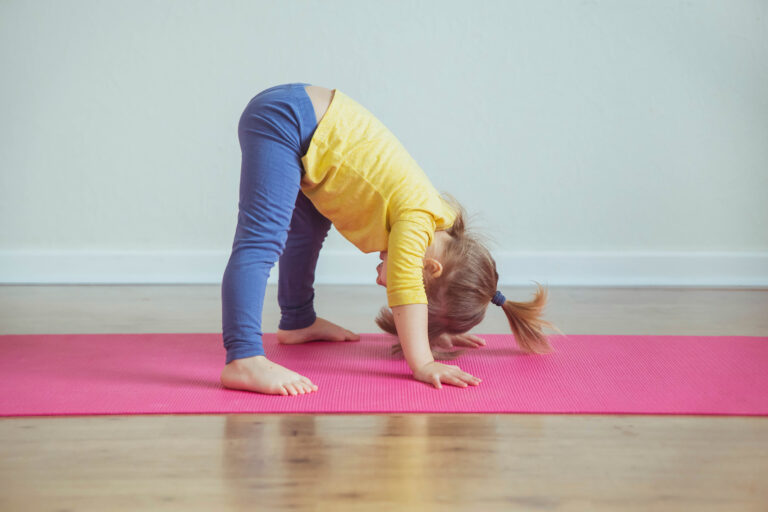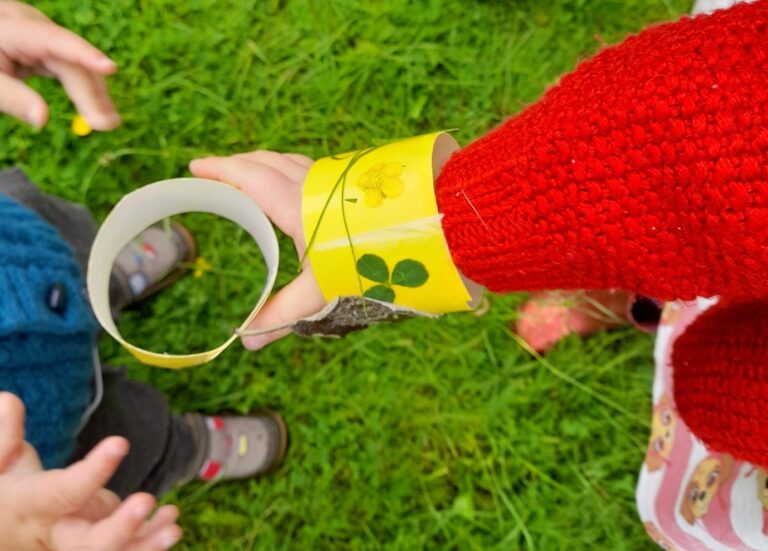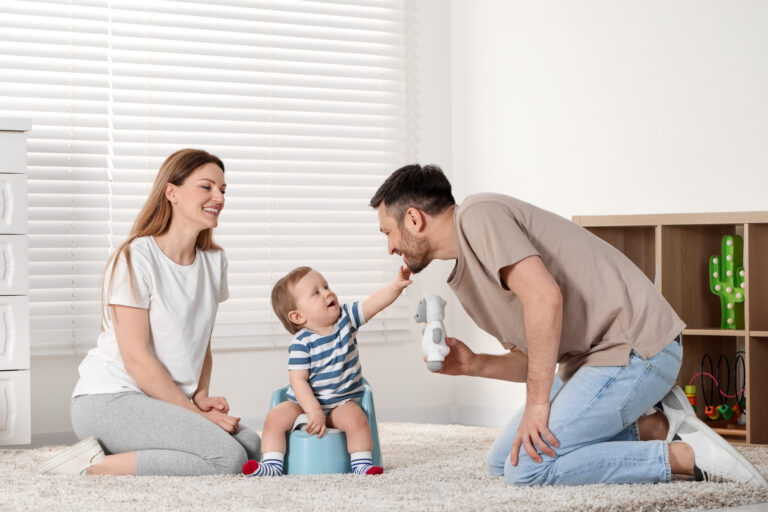5 activities for exploring the world of bugs and creatures.
The great outdoors
Outdoor play has so many benefits for children, even when the days feel short and cold remember that:
- Open spaces are perfect for running, jumping, skipping and climbing, all of which develop your child’s gross motor skills.
- Being outside is a multisensory experience, great for all round learning and gaining confidence.
- Time spent in bright daylight tops up vitamin D levels, essential for healthy bone growth.
- Fresh air and exercise are known to have a positive influence on mood and sleep for adults and children alike.
- It’s a brilliant opportunity to focus your attention on your child, without the screens which dominate modern life.
Here are some ideas around the theme of Minibeasts to make your outdoor adventures even more fun-filled.
Setting the scene
To fire up your child’s imagination and whet their appetite for discovery, read a few books featuring minibeasts, look up some common species on the internet, make a list of ‘bug detective’ equipment, or find out what kind of habitats minibeasts like best. Make sure your child is aware that minibeasts are living creatures that carry out important jobs in the wild, and that care is needed in order not to hurt them.
Minibeast search
Whether in the garden, park or woodland, there are always plenty of creepy crawlies to find. Create a visual list of common bugs so you can tick off together. Point out good places to search, such as under fallen leaves, logs, and stones; on flowers, grasses and trees. Use a brush to gently persuade the bugs to come out and gently hold them while your child views under a magnifying glass. Always place the bugs back into their habitat afterwards and explain how bugs should be cared for and always left back with their families. When you get home, you can use the visual list to find out more about the minibeasts using a book or online search. Your child may then like to draw, paint or mould (using playdough) their own bugs. Together you can enhance the experience even further by counting the bug’s legs or antennae and sorting bugs into colours and leg numbers.
Mini world
If your garden or nearest outdoor area isn’t alive with bugs, why not create a bug hotel. This mini-world can be big or small. It can be made of pallets, bricks, stones, soil, grasses or leaves. Leave the hotel untouched for a few weeks then investigate the new visitors together by removing the top cover or stones.
Homemade Wormery
Find a large clear plastic bottle and make a simple funnel: Roll card into a cone shape and snip off the end. Take the bottle outside with a trowel or spoon and begin to pour soil into the bottle using the funnel. When you have about 5cm of soil, add a 2cm layer of sand or fallen leaves. Alternate the layers until you have nearly filled the bottle, then dig up several worms and carefully add them to the bottle. Make holes in the cap and close the bottle in case it topples. Within a few days the worms will have mixed the layers up completely.
Exploring even more
Encourage your child to investigate and use their curiosity even more while outside in the natural world. Create more tick sheets to cover natural sounds, leaf and tree identification, shapes and flowers. Your child can then become even more aware of their surroundings – not just what lies under their feet!
Outdoor minibeast art
Have a close look at some mini beasts and talk about patterns and shapes and colours of each. Spend some time outdoors collecting a few natural items such as stones, leaves, sticks, shells, conkers and so on. Find a flat area of grass, soil or similar, and use your collected treasures to create a picture of a minibeast. Stones in a spiral could represent a snail, or in a straight line will look more like a caterpillar. Colourful leaves arranged symmetrically look like a butterfly, and so on. Take photos of your art to print out.
There are many ways to make playing outdoors into an adventure, we hope these ideas have inspired you to pop on your wellies and get out there!
Written for the Early Years Alliance by Martha Hales.

